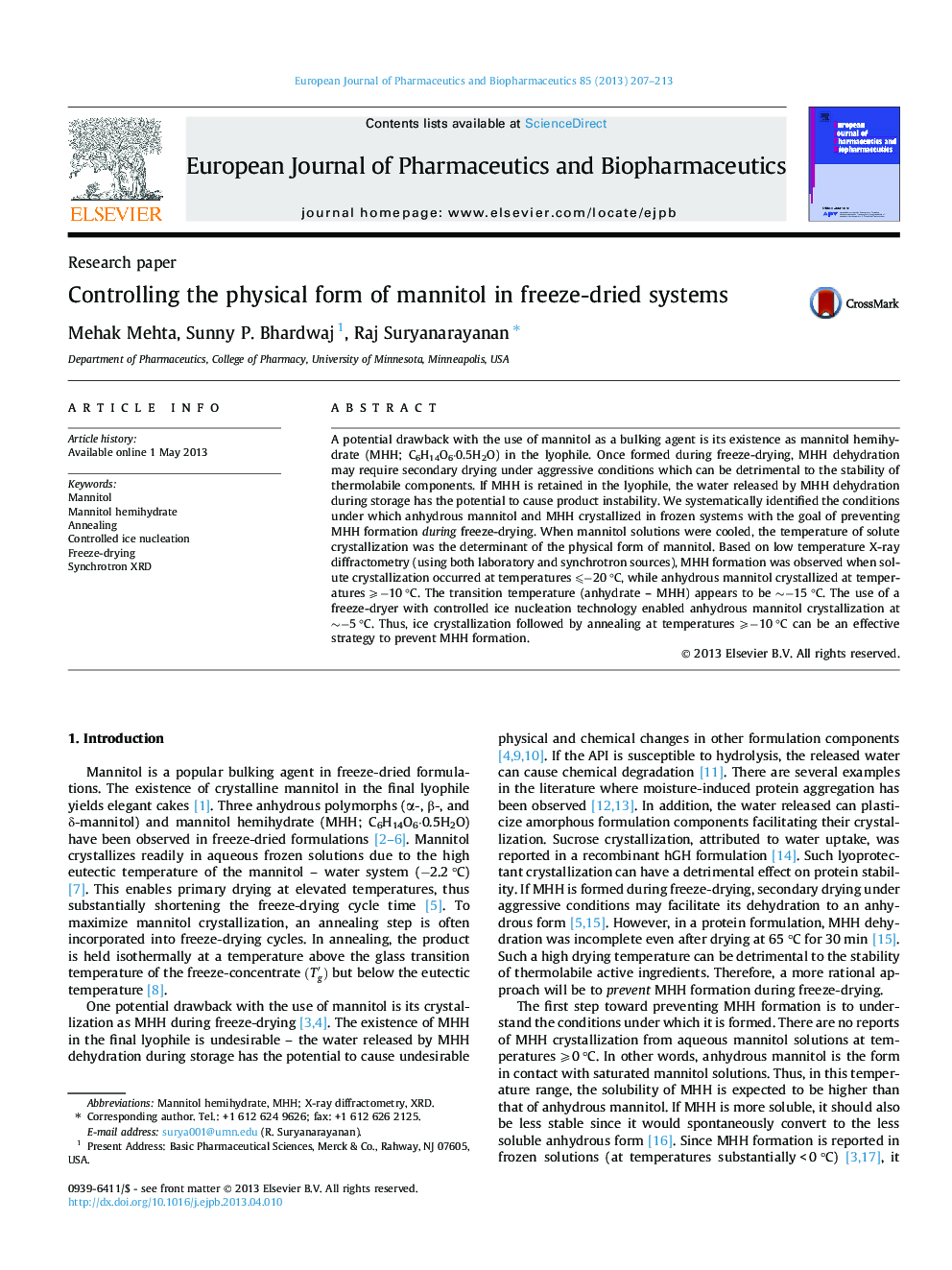| کد مقاله | کد نشریه | سال انتشار | مقاله انگلیسی | نسخه تمام متن |
|---|---|---|---|---|
| 2083652 | 1545348 | 2013 | 7 صفحه PDF | دانلود رایگان |

A potential drawback with the use of mannitol as a bulking agent is its existence as mannitol hemihydrate (MHH; C6H14O6·0.5H2O) in the lyophile. Once formed during freeze-drying, MHH dehydration may require secondary drying under aggressive conditions which can be detrimental to the stability of thermolabile components. If MHH is retained in the lyophile, the water released by MHH dehydration during storage has the potential to cause product instability. We systematically identified the conditions under which anhydrous mannitol and MHH crystallized in frozen systems with the goal of preventing MHH formation during freeze-drying. When mannitol solutions were cooled, the temperature of solute crystallization was the determinant of the physical form of mannitol. Based on low temperature X-ray diffractometry (using both laboratory and synchrotron sources), MHH formation was observed when solute crystallization occurred at temperatures ⩽−20 °C, while anhydrous mannitol crystallized at temperatures ⩾−10 °C. The transition temperature (anhydrate – MHH) appears to be ∼−15 °C. The use of a freeze-dryer with controlled ice nucleation technology enabled anhydrous mannitol crystallization at ∼−5 °C. Thus, ice crystallization followed by annealing at temperatures ⩾−10 °C can be an effective strategy to prevent MHH formation.
Figure optionsDownload high-quality image (124 K)Download as PowerPoint slide
Journal: European Journal of Pharmaceutics and Biopharmaceutics - Volume 85, Issue 2, October 2013, Pages 207–213